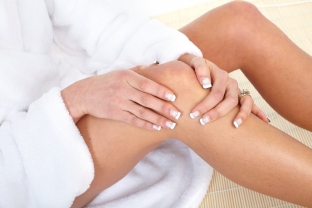The group of diseases of the joints includes pathologies and disorders of various etiologies, degrees of severity, which have different consequences, occur in patients of different age categories. However, these diseases are more or less similar in their symptoms – pain, swelling and limited mobility of the affected joint. Physical injuries, including sports, metabolic disorders, age-related changes in the body – the main causes that lead to the development of diseases belonging to this group. In the treatment of this kind of ailments, the method of plasmolifting of the joints demonstrated high efficiency, detailed information about which estet-portal.com will provide in this article.
General information about plasma-lifting of joints: what is the essence of the procedure
Plasmolifting of joints – injection procedure, the essence of which is the introduction into the area of the affected joint of the patient's own, specially processed blood plasma. Result – reduction of pain, removal of inflammation, increased mobility, accelerated restoration of cartilage tissue. Use of original Plasmolifting tubes – an important condition that ensures the safety and effectiveness of treatment.
Plasmolifting – a non-surgical procedure during which the patient's own plasma is injected with a high content of growth factors.
What ensures the effectiveness of treatment with the plasmolifting method? The human body is capable of self-healing. The regeneration process is triggered by growth factors that are contained in the blood plasma. They are able to activate cells (in this case, cartilage and bone tissue) and start the process of their recovery.
What you need to know about the procedure:
- indications and contraindications for joint plasmolifting;
- how is the procedure of plasmolifting of the joints performed: description of the process;
- is it worth doing or not: how effective is plasmolifting of the joints;
- pros and cons of joint plasmolifting procedure.
Indications and contraindications for joint plasmolifting
Indications for plasmolifting of the joints are various diseases of these structures of the body of the most diverse etiology:
- injuries;
- arthritis I and II degree;
- arthritis I and II degree;
- bursitis;
- tendinitis;
- osteochondrosis;
- muscle spasms;
- bone tissue atrophy;
- meniscal disease;
- coxarthrosis;
- plantar fasciitis, etc.
As for the contraindications applicable to this method of treatment, due to the absolute compatibility of PRP with the body, there are only a few of them:
- infections in the acute stage;
- malignant neoplasms;
- blood diseases.
Thus, the vast majority of patients have no contraindications to plasma-lifting, which is an indisputable advantage of the procedure.

How is the Plasmolifting procedure performed: a description of the process
The procedure of plasmolifting of the joints, in other words, is an injection of pre-prepared patient's blood plasma enriched with platelets into the target zone.
To prepare the material, the doctor takes 10-50 ml of blood from a vein. The blood is then subjected to a centrifugation process, which results in the separation of the plasma from the blood.
The finished drug is injected into the joint with a needle and syringe. Despite the painlessness of the injection, some patients ask the doctor to apply local anesthesia to ensure absolute comfort during therapy.
Worth it or not: how effective is plasmolifting of the joints
The effectiveness of plasmolifting of the joints increases with each procedure – the initial effect is noticeable after the first session, however, for a more pronounced improvement, the doctor selects a course of therapy.
As for the initial result, after the first injection of own plasma, pain decreases, joint mobility improves.
The duration of the treatment course varies depending on the type and degree of the disease, on average, the patient needs to undergo from 5 to 7 procedures. The minimum time interval between injections is about 3-5 days.
As a procedure with virtually no contraindications, self plasma injections provide excellent results with minimal risk.
A couple of months after the procedure, restoration of the joint, complete disappearance of pain, removal of inflammation, normalization of mobility is observed.
Pros and cons of joint plasmolifting procedure
Like any other therapy, joint plasmolifting has its advantages and disadvantages. For the sake of fairness, estet-portal.com would like to note that there are much more advantages to treating with your own plasma than disadvantages:
- no side effects;
- no risk of intolerance;
- reducing the number of drugs taken;
- large number of readings;
- few contraindications;
- no recovery period;
- excellent compatibility with other treatments.
Among the disadvantages of the procedure, only two can be distinguished:
- need for injections;
- relatively high cost.
Plzamolifting of the joints annually helps many patients to avoid surgical intervention and reduce the drug burden on the body. As a procedure with virtually no contraindications, self plasma injections provide excellent results with minimal risk.






Add a comment